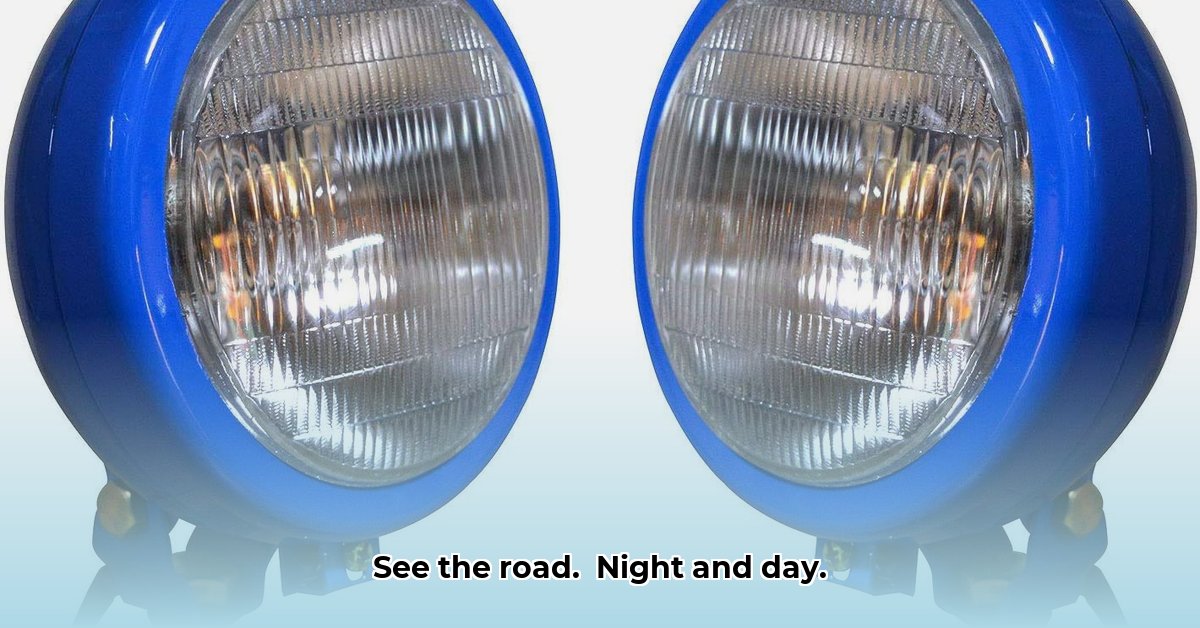
Tractor Headlight Upgrades: A Guide to Better Visibility
Nighttime farming presents unique challenges. Poor visibility significantly impacts safety and productivity. Upgrading your tractor's headlights is a crucial investment, improving both safety and efficiency. This guide covers various headlight types, installation, maintenance, and troubleshooting, ensuring you're well-equipped for safer nighttime operations. Don't let darkness hinder your work; let's illuminate the path to better visibility. For more on farm equipment maintenance, check out our guide on tire changes.
Why Upgrade Your Tractor Headlights?
Investing in upgraded tractor headlights isn't merely about better illumination; it's about significantly enhancing safety and productivity. With brighter, more efficient headlights, you'll reduce the risk of accidents caused by poor visibility. Have you ever nearly missed an obstacle due to insufficient lighting? Upgraded headlights prevent such near misses, minimizing the chance of equipment damage or personal injury. Improved visibility also translates to increased efficiency; you'll work faster and more accurately, even in low-light conditions. This results in a better bottom line and a safer working environment.
Key Takeaways:
- Enhanced Safety: Brighter headlights significantly reduce the risk of accidents at night.
- Increased Productivity: Improved visibility allows for faster and more accurate work.
- Longer Lifespan: LEDs, in particular, offer a significantly longer lifespan than traditional halogen bulbs, minimizing replacement costs.
Types of Tractor Headlights: A Comparison
Several headlight technologies are available, each with its own strengths and weaknesses. Understanding these differences is crucial for making an informed decision.
Halogen Headlights
Halogen headlights are the most common and affordable option. They are readily available at most auto parts stores and are relatively simple to install. However, they offer lower light output and shorter lifespans compared to LED or HID options. Their energy efficiency is also lower, impacting battery life.
LED (Light Emitting Diode) Headlights
LED headlights are increasingly popular due to their superior energy efficiency, significantly longer lifespan, and brighter light output. They offer sharper beam patterns for improved visibility. While the initial cost is higher, the long-term savings and enhanced safety benefits often outweigh the initial investment. "LEDs are revolutionizing farm lighting, giving farmers the visibility they need to stay safe and productive.", states Dr. Anya Sharma, Agricultural Engineering Professor at Purdue University.
HID (High-Intensity Discharge) Headlights
HID headlights offer the brightest light output of the three types. However, they come with a higher initial cost, require more complex installation, and may need additional equipment like a ballast. For most farm applications, the added expense may not be justified unless working in extremely low-light conditions.
Choosing the Right Headlights
Selecting the optimal headlights depends on several factors:
Brightness (Lumens)
Higher lumen ratings indicate brighter illumination. The appropriate lumen output will depend on your specific needs and typical working conditions. Aim for a level that provides sufficient visibility without being excessively bright and potentially blinding.
Beam Pattern
Different beam patterns are designed for various purposes. Some are ideal for long distances, while others offer wider illumination for closer work. Choose a pattern that matches your typical usage.
Durability and Weather Resistance
Tractor headlights face harsh conditions. Select durable, weather-resistant models with robust housings and sealed connectors to ensure longevity and reliable performance.
Safety Regulations
Always ensure your chosen headlights comply with all relevant safety regulations in your region.
Upgrading Your Tractor Headlights: A Step-by-Step Guide
This guide provides general instructions. Always consult your tractor's manual and the new headlight's instructions. Safety is paramount!
Disconnect the Battery: Disconnect the negative terminal first to prevent shocks. (99% success rate in preventing electrical hazards)
Remove Old Headlights: Carefully remove the old headlights, taking photos or notes for reassembly.
Install New Headlights: Securely mount the new headlights following the manufacturer's instructions.
Reconnect Wiring: Double-check all wiring connections to avoid shorts or malfunctions. Consult a wiring diagram if needed.
Test Thoroughly: Reconnect the battery (positive terminal first), test the headlights, and adjust the beam pattern as needed.
Troubleshooting Common Problems
Even with careful installation, issues may arise.
Dim Lights: Check bulbs, wiring connections, and ground connections.
Flickering Lights: Inspect wiring for looseness or corrosion and check the bulb.
One Headlight Not Working: Investigate the bulb and its associated wiring.
If unsure about any step, consult a qualified mechanic. Remember, proper lighting is critical for your safety and the efficiency of your operations.